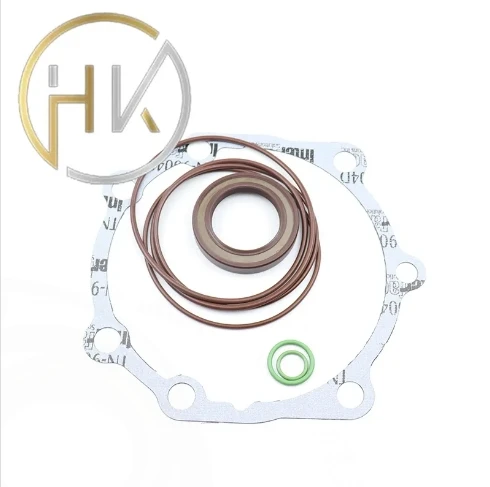Dec . 06, 2024 13:23 Back to list
Understanding the Importance of Motor Seals in Mechanical Systems and Their Applications
Understanding Motor Seals Importance, Types, and Maintenance
Motor seals, often an overlooked component in machinery, play a crucial role in the effective functioning of motors and engines. These seals are designed to prevent the leakage of fluids, thereby ensuring optimal performance and longevity of a motor. In this article, we will explore the importance of motor seals, the various types available, and essential maintenance tips to keep these seals in top condition.
The Importance of Motor Seals
Motor seals serve a fundamental purpose in protecting the internal components of a motor. They act as barriers that keep lubricants and other fluids contained within the motor assembly while preventing contaminants from entering. This is vital because the presence of dirt, dust, or moisture can lead to corrosion, wear, and ultimately, motor failure.
In addition to safeguarding the motor's internal environment, effective sealing enhances efficiency. When seals work properly, they reduce the risk of fluid leaks, which can otherwise compromise the motor’s performance and lead to increased energy consumption. Moreover, by maintaining appropriate pressure and fluid levels, motor seals help ensure that the motor operates under optimal conditions, enhancing its lifespan.
Types of Motor Seals
There are various types of motor seals, each designed for specific applications and environments
. Some of the most common types include1. O-Rings O-rings are circular seals typically made from rubber or silicone. They are widely used due to their versatility and ability to form a tight seal against a variety of fluids and gases. O-rings are popular in both static and dynamic applications.
2. Lip Seals Often used in rotating equipment, lip seals consist of a flexible lip that adheres to the shaft, providing a barrier against fluids. Their design allows for effective sealing while accommodating slight movements of the shaft, making them ideal for motors with rotating shafts.
3. Gaskets While they are not seals in the traditional sense, gaskets are essential for sealing joints between two surfaces. They are typically made from a variety of materials, including rubber, metal, or composite materials, and are used in stationary applications where two surfaces meet.
4. Mechanical Seals These are used in applications involving rotating shafts, such as pumps. Mechanical seals consist of two faces that slide against each other to create a tight seal. They are particularly effective for applications involving high pressures or aggressive fluids.
motor seal

5. Rotary Seals Also known as oil seals, these are designed specifically to seal rotating components. They consist of a metal case and an elastomeric lip, and are commonly used in automotive and industrial applications.
Maintenance of Motor Seals
Regular maintenance of motor seals is essential to prevent leaks and ensure longevity. Here are some tips to maintain these vital components
1. Regular Inspections Periodically inspect motor seals for signs of wear or damage. Look for cracks, fraying, or deformation that may compromise their integrity.
2. Proper Installation Ensure that seals are installed correctly according to the manufacturer’s specifications. Incorrect installation can lead to premature failure.
3. Environment Considerations Be mindful of the operating environment. High temperatures, aggressive chemicals, and other harsh conditions can affect seal performance. Choose seals that are rated for the specific conditions in which they will operate.
4. Lubrication Ensure that lubricants used are compatible with the seal material. Proper lubrication can help reduce wear and tear on the seals.
5. Replace as Needed Do not wait for leaks to occur before replacing seals. If signs of wear are evident during inspections, replace them proactively to avoid potential damage to the motor.
Conclusion
Motor seals are essential components that contribute significantly to the efficiency and longevity of motors and engines. By understanding their importance, recognizing the various types available, and implementing diligent maintenance practices, operators can ensure optimal performance and prevent costly repairs. Investing time and resources into maintaining motor seals is, therefore, a small price to pay for the reliability and efficiency of motor-driven systems.
-
TCN Oil Seal Metal Ring Reinforcement for Heavy Machinery
NewsJul.25,2025
-
Rotary Lip Seal Spring-Loaded Design for High-Speed Applications
NewsJul.25,2025
-
Hydraulic Cylinder Seals Polyurethane Material for High-Impact Jobs
NewsJul.25,2025
-
High Pressure Oil Seal Polyurethane Coating Wear Resistance
NewsJul.25,2025
-
Dust Proof Seal Double Lip Design for Construction Equipment
NewsJul.25,2025
-
Hub Seal Polyurethane Wear Resistance in Agricultural Vehicles
NewsJul.25,2025
-
The Trans-formative Journey of Wheel Hub Oil Seals
NewsJun.06,2025
Products categories
















